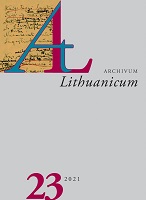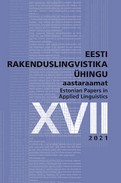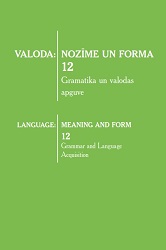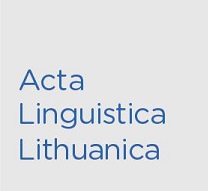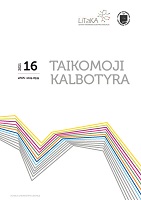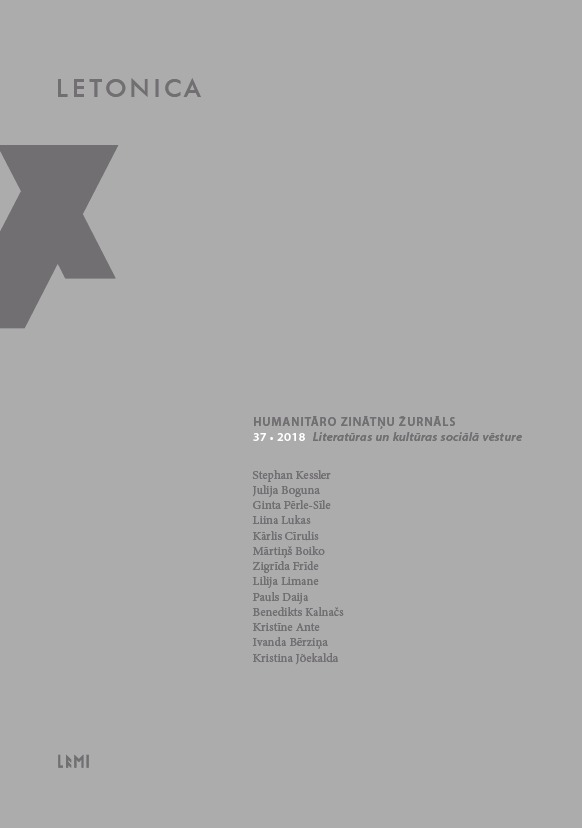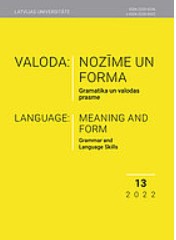Author(s): Jurgita Venckienė / Language(s): Lithuanian
Issue: 23/2021
The main source of Jonas Jablonskis’ Lietuviškos kalbos gramatika (Grammar of the Lithuanian language, Tilsit, 1901 [JaG]), signed under the pseudonym of Petras Kriaušaitis, is Petras Avižonis’ Liėtùviška Gramatikė̃lė (Small Lithuanian Grammar, [Petersburg, 1898] [AvG]). However, Jablonskis significantly supplemented AvG by adding the chapters on preposition, conjunction, interjection, syntax and orthography. He also separated the descriptions of noun and adjective, added chapters on phonetics, pronoun, numeral, verb, used Lithuanian language terms. Jablonskis did not indicate other sources in JaG, fragments of the text taken from other works are not identified as such. However, later Jablonskis wrote that he also used Kazimieras Jaunius’ Lietùviškas kalbomõkslis. Baltiko padangese (Lithuanian Grammar. In the Baltic Skies, [Dorpat,] 1897 [JaunK]). The aim of this study is to determine the relationship between these two grammars. Some of the material for JaG was undoubtedly taken over directly from JaunK, for it was not present in AvG or other grammars that Jablonskis could have used. However, Avižonis also used JaunK, so some fragments entered JaG through AvG, rather than directly from JaunK. Since Jablonskis took over AvG almost in its entirety, there is no doubt such fragments of JaunK had previously been incorporated in AvG only to later appear in JaG. All the more so as JaunK’s statements and examples are equally reformulated, supplemented or abbreviated in AvG and JaG. The article analyses only the material that was taken over to JaG directly from JaunK and that was not present in AvG. It is much more difficult to identify the source of the fragments which are found in both JaunK and Friedrich Kurschat’ Grammatik der Littauischen Sprache (Grammar of the Lithuanian language, Halle, 1876 [KG]). It is not always clear whether Jablonskis took it directly from KG or through JaunK. In such cases, the immediate context is considered. When not only the idea of KG but also more material, adjacent sentences, are taken over from the same section of JaunK, the path of the fragment is considered to be KG → JaunK → JaG. The connection between JaunK and JaG is also evidenced by the uniform wording of sentences. In his grammar, Jablonskis stated that he supported character [č], proposed by Jaunius, as well as orthography of nom. pl. of i, u stems with endings įs, -ųs. JaunK could also have influenced the spelling of the numerals trįs ‘three’, keturiasdešimtas–devyniasdešimtas ‘fortieth-ninetieth’. Jablonskis used Jaunius’ terms būdvardis ‘adjective’, veiksmažodis ‘verb’, prieveiksmis ‘adverb’, jausmažodis ‘interjection’; linksnis ‘case’, linksniavimas ‘declination’, dvilypuotieji būdvardžiai ‘pronominal adjectives’, tikrieji ‘quantitative’ and paeiliniai ‘ordinal’ (numerals), sakomasis būdas ‘mood’, savyveiksmis ‘reflexive verb, form’, nestati, nestačioji kalba ‘indirect speech’. Fragments of JaunK about the concept and types of sounds have been taken over to the JaG. JaG material on consonant assimilation also has connection with JaunK. Jablonskis also used JaunK while preparing the chapter of morphology. There are connections in the definition of adjective, the description of category of number of nouns, pronominal adjectives and gradation of adjectives. There are also identical statements about the declension of numerals and their semantic groups in JaunK and JaG. According to JaunK, the definition of the pronoun was formulated in JaG. Jablonskis also used JaunK to describe verbs, adverbs, and interjection. In the chapter of the syntax, the influence of JaunK can be seen in the description of the use of participants. Jablonskis used the linguistic material, examples of JaunK. Jablonskis used the data of dialects, mostly Samogitians, provided by JaunK. Comments on the grades of adjectives, variants of pronouns, forms of future tense, use of adverbs, as well as lexical variants are related to JaunK. In summary, the direct influence of JaunK can be registered in slightly less than a quarter (48 out of 224) of JaG’s paragraphs.
More...

